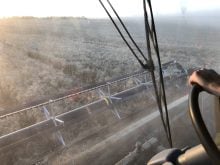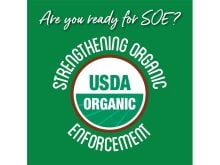The beef packing industry must overhaul its processing methods to keep meat products bacteria free.
An Agriculture Canada researcher says the numbers of E. coli bacteria may be higher at the end of the meat processing system than at the beginning when the animals are killed and skinned.
“This situation is not unique to Canada. It is almost certainly a general problem,” said Colin Gill of the Lacombe Research Centre.
His research team is investigating the risks from pathogens being deposited on meat during the carcass breaking process.
Read Also

U.S. bill could keep out Canadian truckers
The Protecting America’s Roads Act, which was tabled in the U.S. House of Representatives at the beginning of October, would “rid the country of illegal immigrant commercial truck drivers and ineligible foreign nationals.”
While steps are taken to clean carcasses to remove fecal contamination, Gill said that is not enough.
Part of the pro-blem is due to equipment design in plants.
“They’re going to have to start from scratch,” he said. “They’ll have to look at the design of meat plant equipment for cleanability.”
Cutting equipment is hard to clean.
The staff are supposed to dip knives and other tools in water heated to 82.3 C, which is hot enough to kill most bacteria.
But often workers are in a hurry and only dip their tools for a few seconds. This is not enough to kill anything, said Gill.
Larger equipment in meat plants is sprayed with hot water but it cools too quickly.
Danger lurks
Bacteria may be present even though equipment and meat contact surfaces appear clean after inspection.
“Unfortunately too much emphasis is placed on what something looks like instead of what it is doing in microbiological terms.”
Gill’s team is working in several large plants and will follow up with the companies to suggest ways to eliminate sources of contamination.
Changes to plant operations may involve new government regulations on cleaning and the type of equipment. This could involve a huge expense for plants so some companies may balk, said Gill.
The dairy industry already has regulated design specifications for equipment that comes in contact with milk and processed products to ensure they are bacteria free.
The beef project received $79,350 to cover a year’s worth of research from the Canada-Alberta Beef Industry Development Fund.
















